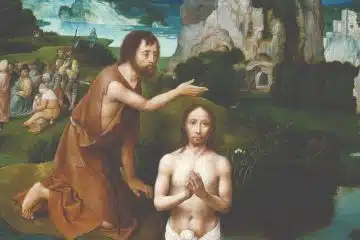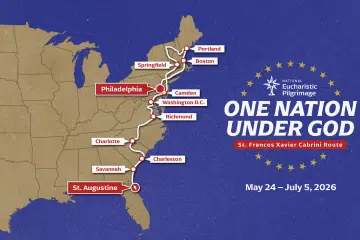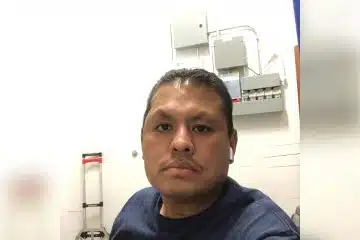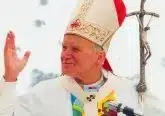How does the Pastoral Provision work?
By John Stegeman
The Catholic Telegraph
The Pastoral Provision, approved by Pope St. John Paul II in 1980, provides a framework wherein a former Episcopal priest may be ordained, after a time, as a Catholic priest. There are many steps in the process, and it takes several years and much formation to complete.
Meet J. Thomas Wray, former Episcopal priest now a candidate for Catholic ordination
Below is a look at some of the key steps in the process of the Pastoral Provision.
The beginning
The candidate first directs a request for consideration of his desire to the priesthood to the bishop of a diocese of his choice. This bishop becomes the “sponsoring bishop” throughout the process. In the case of J. Thomas Wray, Archbishop Dennis M. Schnurr was the sponsoring bishop.
The Congregation for the Doctrine of the Faith (CDF) has determined that two years should intervene between reception into full communion in the Catholic Church and ordination to the priesthood. Another important note is that, to give due regard to the value of clerical celibacy, it is ordinarily the practice of the CDF that the number of married priests in any particular diocese under the Pastoral Provision be limited to two.
Ordinarily, the candidate must have a Master of Divinity degree from an accredited seminary. The sponsoring bishop appoints a “formation mentor” to assist the candidate. The bishop then sends the candidate’s information on to the Ecclesiastical delegate, currently the Bishop of Orange, California, Kevin W. Vann.
At this point the candidate assembles his dossier, a 14-section packet of information including everything from baptismal records to evidence of ordination in the Episcopal church to a detailed resume of service.
Assessment
The candidate undergoes assessment at the Theological Faculty approved by the Ecclesiastical Delegate. Wray’s assessment took place at Seton Hall. The assessment contains full doctrinal evaluation of the candidate and detailed description of the recommended program of intellectual formation in Catholic theology.
The dossier is sent to Rome and the CDF undertakes initial review and responds if a candidate may begin study.
The sponsoring bishop appoints as formation mentors priests who oversee implementation of the program of spiritual, intellectual, human and pastoral formation. In Wray’s case, four priests and one married permanent deacon and his wife worked in these capacities.
The candidate takes a certification examination as well.
Moving Forward
Those mentors provide the sponsoring bishop with their evaluations and recommendations, and those are passed on to the Ecclesiastical Delegate. The sponsoring bishop also sends his personal evaluation and recommendation (votum) of the candidate.
If the candidate passes certification and receives positive evaluations from mentors and sponsoring bishop, the CDF, upon its own positive evaluation of the petition, presents it to the Holy Father for his approval.
If the pope’s decision is positive, a rescript is sent to the Ecclesiastical Delegate who informs the sponsoring bishop he may proceed to ordination of the candidate.
From there, the candidate follows similar steps as seminarians on the path to priesthood. Wray has already been installed as lector and acolyte and his ordination as a transitional deacon is scheduled. If all goes as planned, ordination to the priesthood would follow.
Wray’s case, from petition to rescript, took about three years.
This sidebar article originally appeared in the July 2014 print edition of The Catholic Telegraph.













